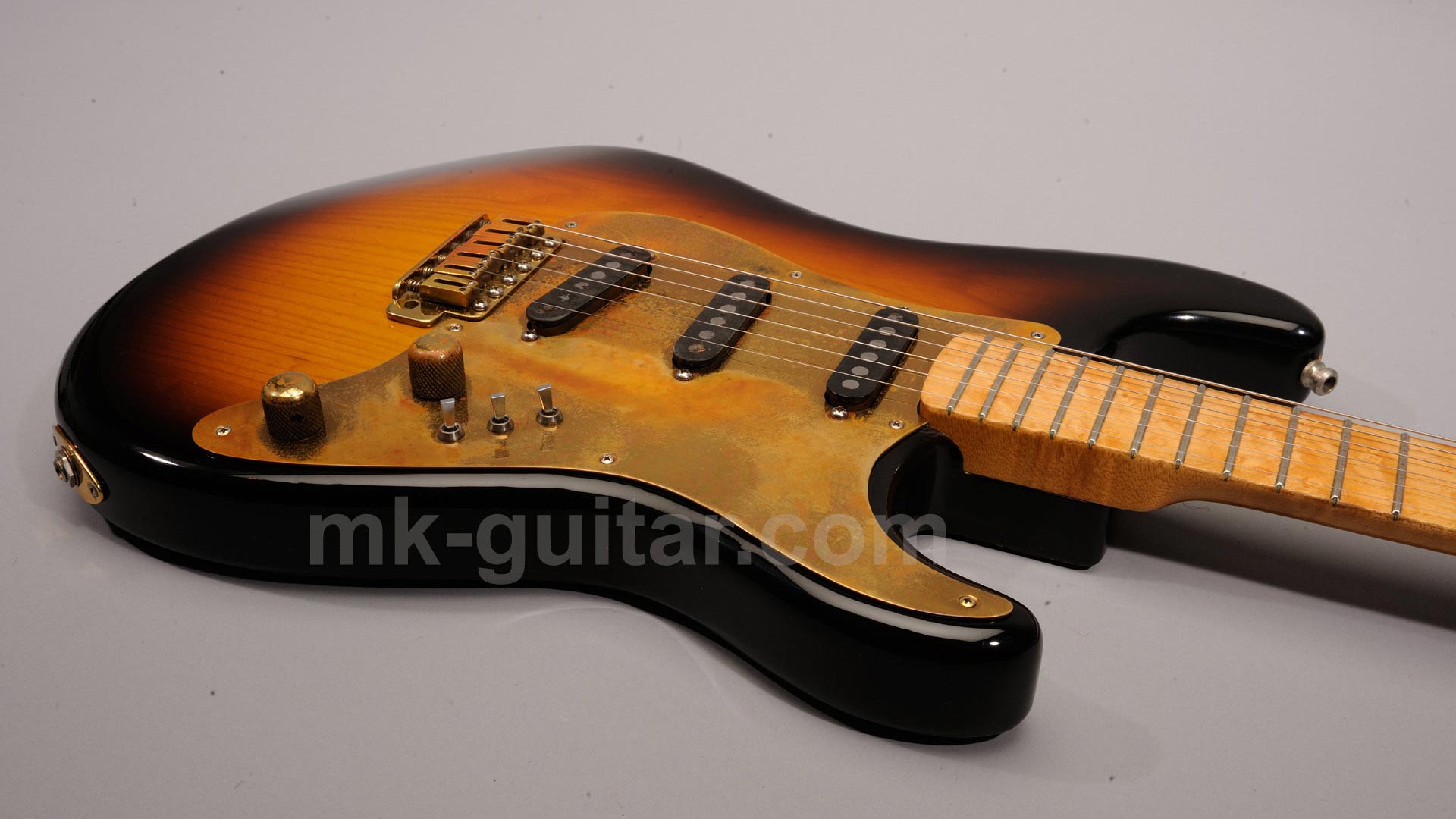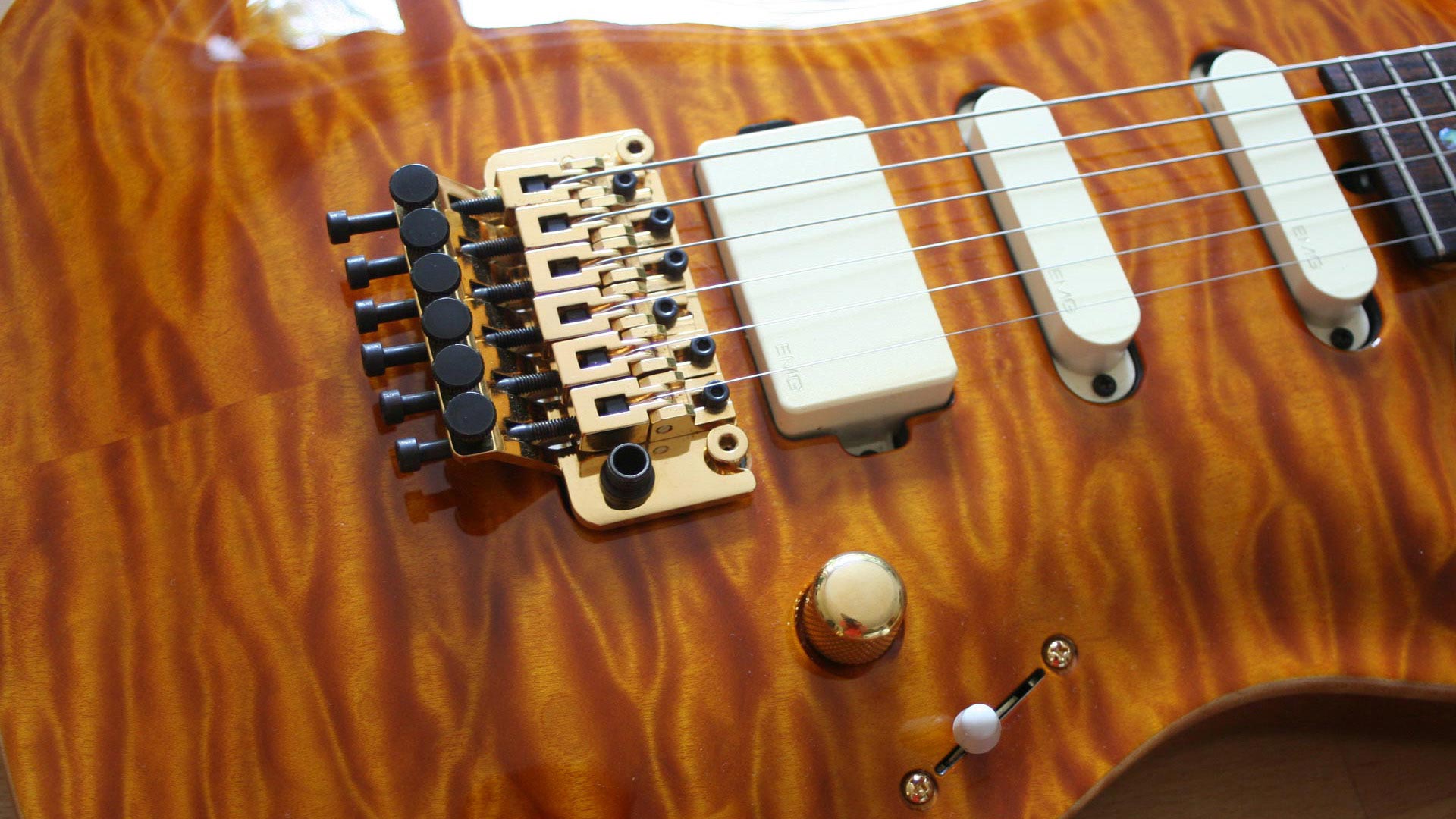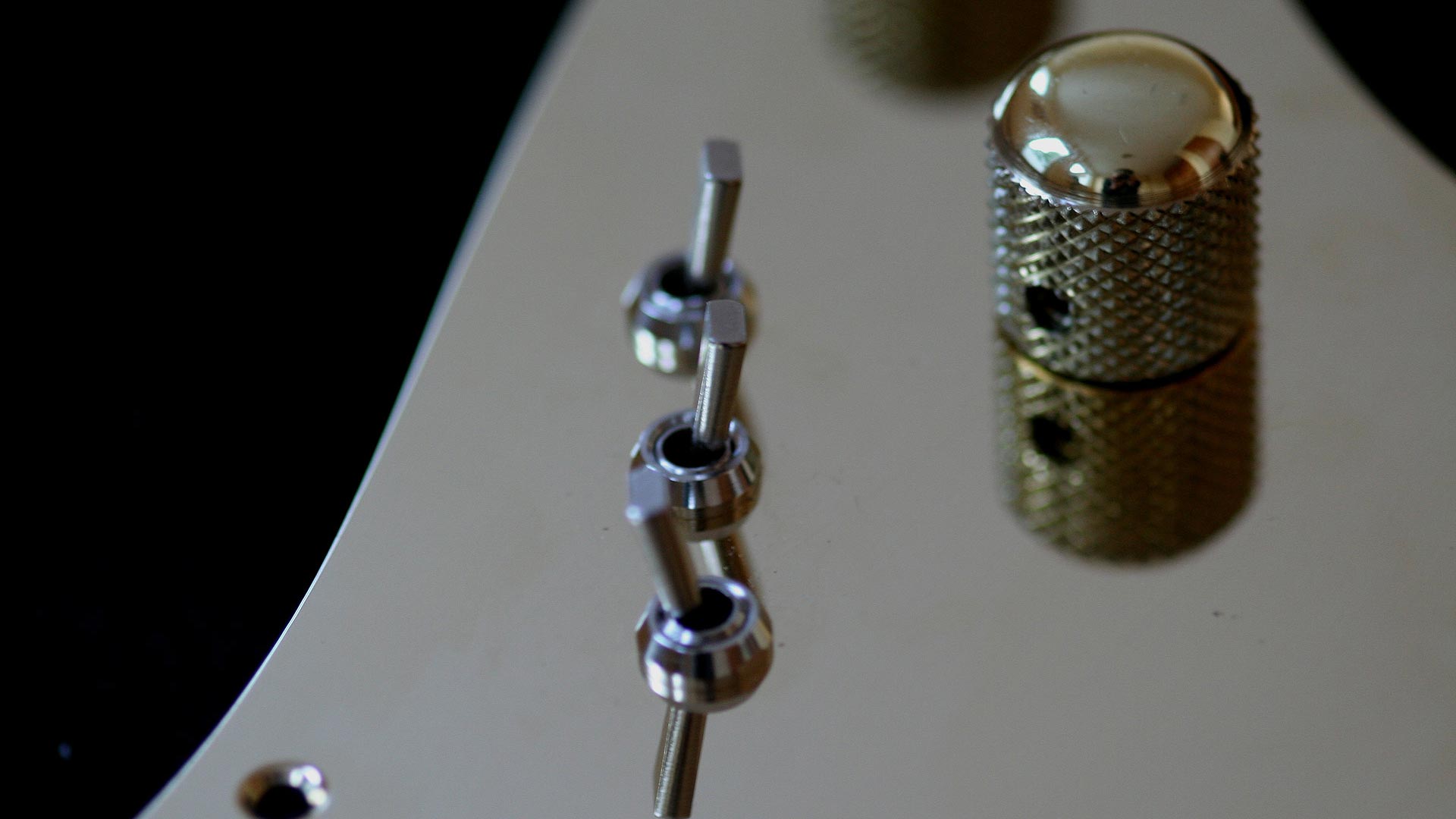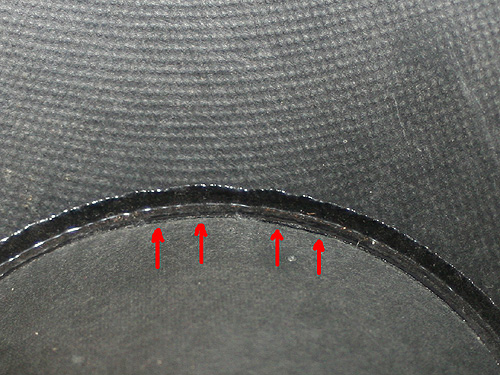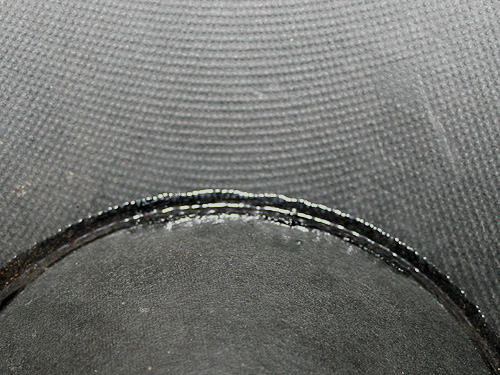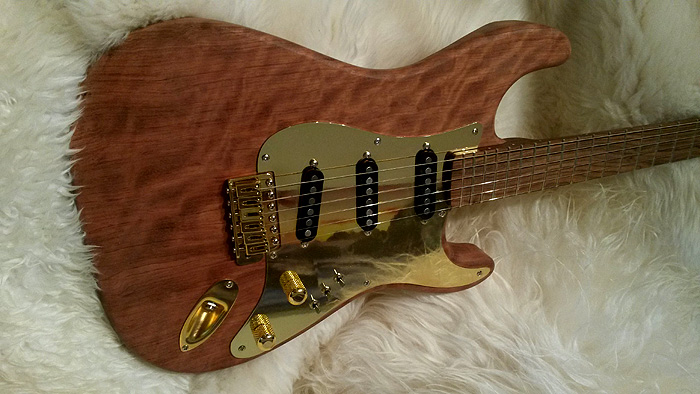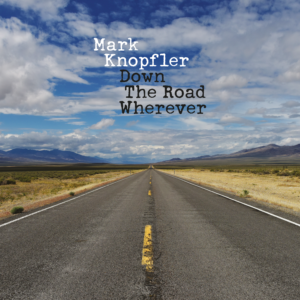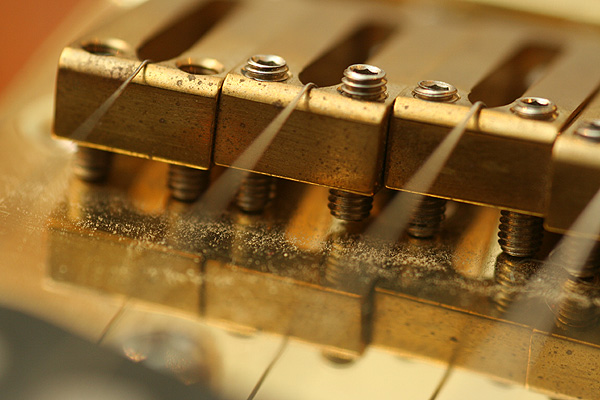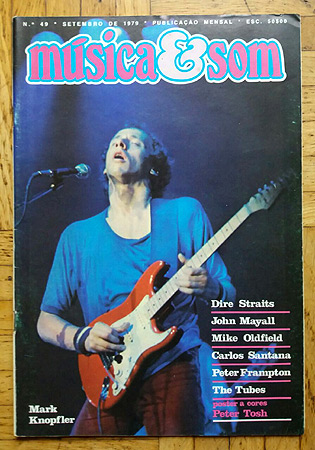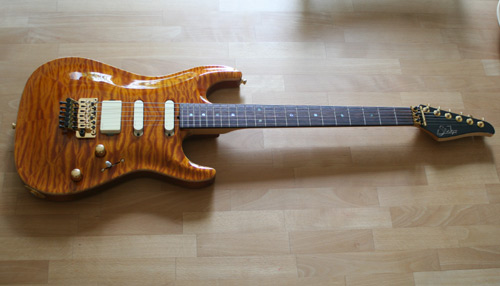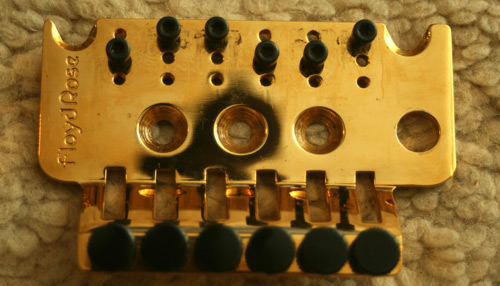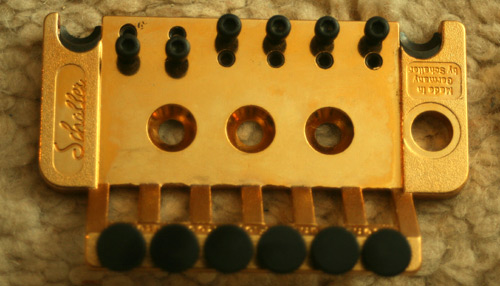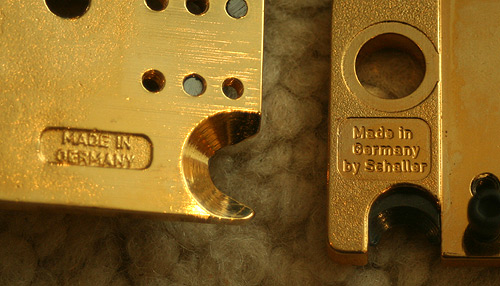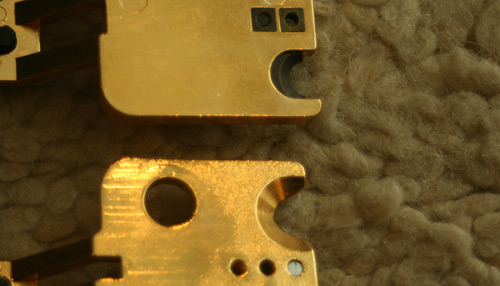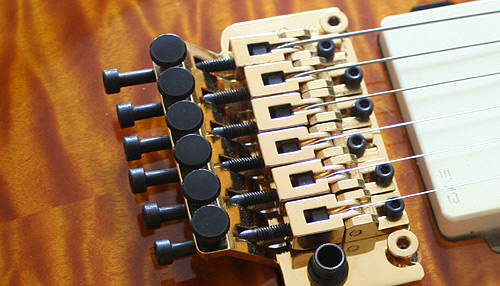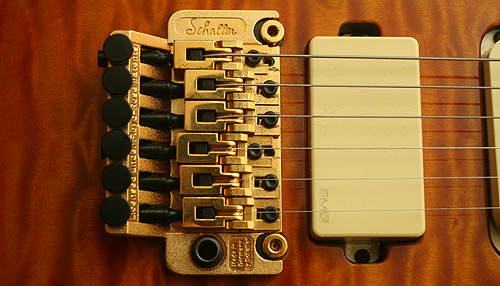Knopfler-style licks on Dream Machine Strat
One of the things I was a bit busy with over the last years is guitar building. The guitar in the following video was inspired by the vintage Schecter Dream Machines that Mark Knopfler started to play in the early 80ies. I also built some models closer to the particular ones that Mark had – like the stolen 1st sunburst, the 2nd sunburst to replace the first, or the red one – but this one has different kind of woods than Mark’s models. The body is a flamed one-piece Bubinga body, and the neck of Pao Ferro. Schecter made a lot of Pao Ferro necks in the Van Nuys era. They also offered Bubinga for the body for some time but these are rather rare compared to the other exotic woods they had.
The guitar is extremely heavy. With ca. 6.3 kg It is by far the heaviest Strat I think I ever played! Well, a lot of vintage Schecters are rather heavy, especially the ones with brass pickguards and tropical woods. This was part of their sound philosophy: a heavy guitar has more sustain.
Bubinga is often used for bass guitars, and it is said to sound sleightly brittle and sometimes ‘analytical’ or even a bit sterile. I was not sure what to expect from a Bubinga Strat but I must say that I was very pleased with the sound results. It indeed has a lot of sustain but it sounds warm and clear.
It is equipped with a Making Movies brass pickguard and a Dream Machine brass tremolo.
In the video I am jamming over a self-programmed backing track loop reminiscent of the Tunnel of Love intro as it was played on some tours a long time ago by the band. I tried to switch between all kind of pickup combinations to demonstrate some of the possibilities. Remember, those tapped pickups have two sounds: vintage-like when the mini switch is down, and fat when the switch is up. The three mini switches with 3 positions each result in 27 combinations, one is all pickups off so you have 26 different sounds.
I played directly into a Soundcraft ui24 digital mixing desk, and I used the software amp and all effects from this device. The amp was the emulation of a Fender Blackface Twin with the 2×12 speakers.
There are no effects except the Lexicon reverb and a basic delay from the ui24.
